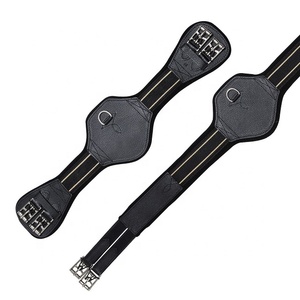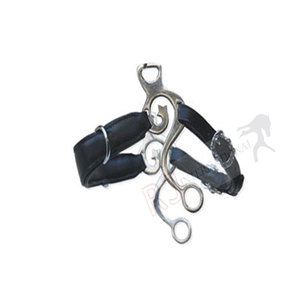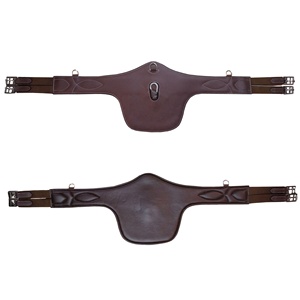(10221 products available)


























































































































































Girth straps are used to secure the saddle on the horse. They help keep the saddle in place when riding, which is crucial for the comfort of both the rider and the horse. Different types of girths are available, each suited for different types of saddles and purposes. Horse girths are an essential part of equestrian gear.
There are various types of girths; they include:
Girths are essential parts of saddles. They are used in many scenarios, such as:
When choosing a girth, there are several factors to consider to ensure comfort for the horse and optimal performance. Here are some major considerations:
Size and Type
It is important to choose the right size for the horse. Girths come in different sizes and types, such as dressage girths, jumping girths, and all-purpose girths. The type of girth to choose depends on the type of riding one does. For instance, if one is into jumping, then a girth designed for that should be gotten. Also, girths come in various sizes, so it is important to ensure the right size is gotten for the horse. Girths should fit snugly without being too tight. Use a measuring tape to measure the girth size. For example, if one uses a dressage saddle, then one needs to get a dressage girth.
Material
Another factor that should be considered is the material of the girth. Horse girths come in different materials, such as leather, neoprene, cotton, and elastic. Each material has its pros and cons. For example, leather girths are durable, neoprene girths are waterproof, and cotton girths are breathable. When choosing a girth, consider the material that best suits the horse's needs and the budget.
Padding
Padding is an important aspect of girths that should not be overlooked. Girths with padding provide extra comfort to the horse by reducing pressure points and chafing. Girths with soft padding are ideal for horses with sensitive skin. When choosing a girth, look for one with enough padding to keep the horse comfortable.
Adjustability
Adjustability is also an important factor to consider when choosing a girth. Girths with adjustable straps allow easy fitting, making them perfect for horses whose body size changes regularly. This can also be a good option for horses that do regular muscle changes due to training. When choosing a girth, check for one with adjustable straps.
Functionality
Consideration should also be given to functionality. Some girths come with extra features, such as D-rings for attaching training aids or additional padding for extra comfort. If one requires these extra features, then go for girths with these functionalities. Overall, when choosing a girth, consider the horse's comfort and the girth's functionality.
Various designs of girthing have different functions and features. Here are some of them:
Function
Girth's main function is to hold the saddle in place. It does this by providing the necessary frictional force that prevents the saddle from slipping sideways or moving forward or backward. In addition to this primary function, girths also serve other purposes. For instance, some girths are designed to protect the horse from chafing and irritation.
Features
When it comes to the features of girths, there are a lot of them. However, the most common and essential ones include padding, adjustability, and holes. Padding is a feature that is found on girths for the sole purpose of preventing chafing and increasing comfort. Padding can be made from a variety of materials, such as neoprene, sheepskin, and foam.
Adjustability, on the other hand, allows the girth to be customized for a perfect fit. This can be achieved through the use of buckles, elastic inserts, and holes. Buckles are the most common method of achieving adjustability. They can be made from plastic, metal, or any other material that can withstand the forces applied to it.
Design (and Material)
Girths can be fabricated using Leather, which is the most common material used to make girths. It is strong, flexible, and has the ability to withstand the forces applied to it. However, leather girths require a lot of maintenance if they are to last long and perform effectively.
Naturally sourced, like neoprene, neoprene girths are less expensive than leather girths and require less maintenance. They are water-resistant and dry up pretty quickly. Because of these features, neoprene girths are perfect for use in competitions.
Girths made from a combination of neoprene and wool padding are known as sheepskin girths. They are more expensive than neoprene girths but provide more comfort than neoprene girths. Like neoprene girths, sheepskin girths are also suitable for use in competitions.
Another design of girths is the elastic girth. This type of girth has elastics on either side to allow for more movement. Elastic girths are commonly used by showjumpers and racers.
Q1. What are the types of girthings?
A1. There are various types of girthings, which include traditional girthing, eco-friendly girthing, and smart girthing. Traditional girthing involves using natural materials like leather to make horse girths. Eco-friendly girthing focuses on sustainable and environmentally friendly practices, such as using eco-friendly materials and minimizing waste. Smart girthing incorporates technology into the girthing process, allowing for monitoring and data collection to improve horse health and performance.
Q2. How often should you change your Girth?
A2. One should change the horse girth depending on its rate of wear. For instance, if the girth is worn out or damaged, it is also necessary to change it. Moreover, changing girths also depends on the use. If one uses the girth extensively, then it should be changed frequently. In addition to this, other factors such as the severity of the conditions under which it is used and the amount of time it is used also determine how often it should be changed.
Q3. How does the material of a Girth affect its function?
A3. The material of a girth affects its function in various ways such as comfort, durability, adjustability, and even price. For instance, materials like leather or neoprene are more durable and provide better support than cotton or elastic. Similarly, leather or neoprene girths will be more comfortable than cotton or elastic ones. That is why it is important to select the appropriate material for a specific use in order to achieve maximum effectiveness.